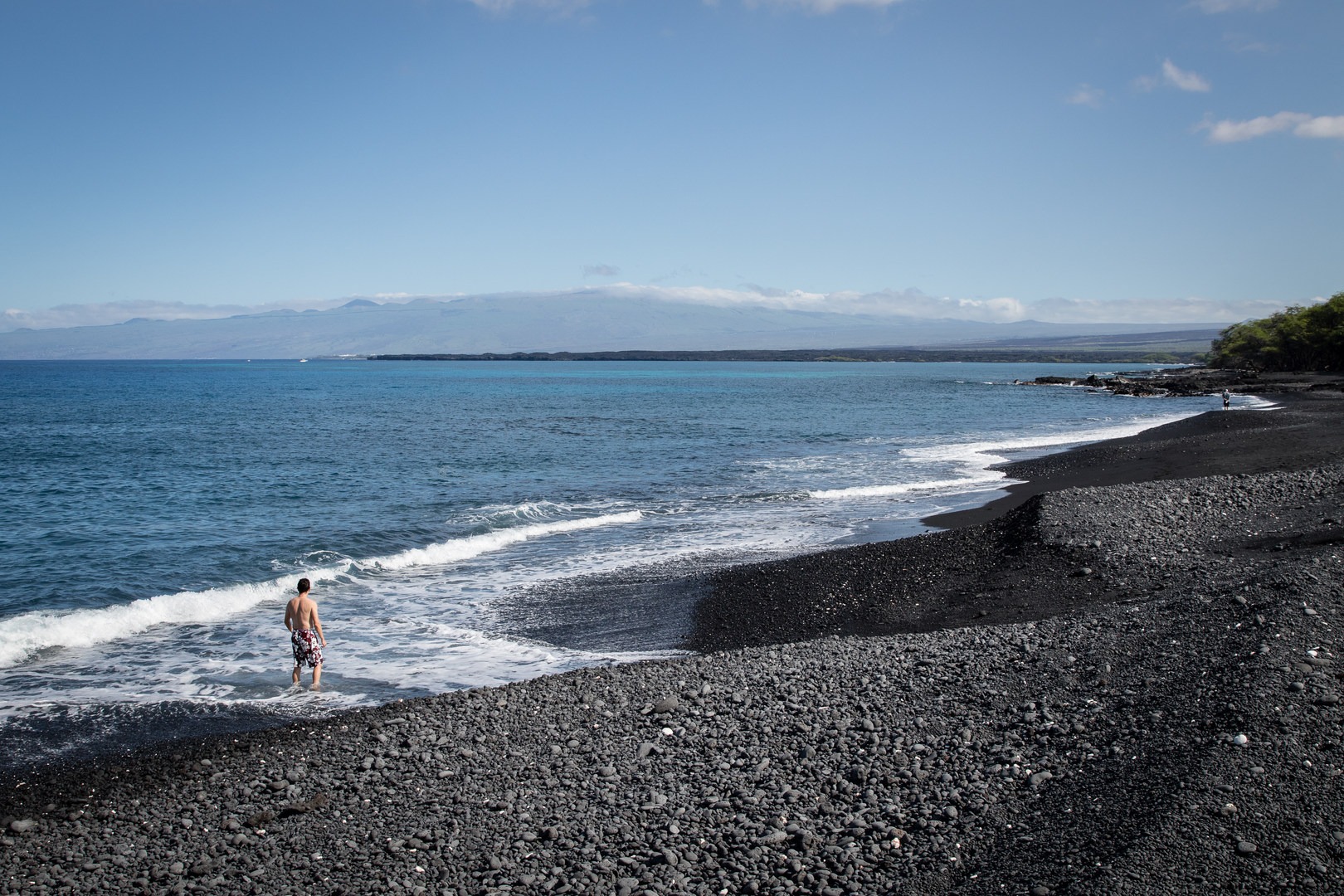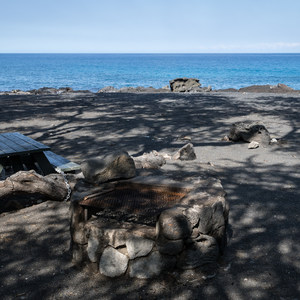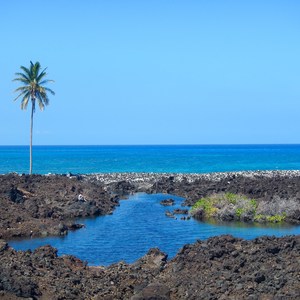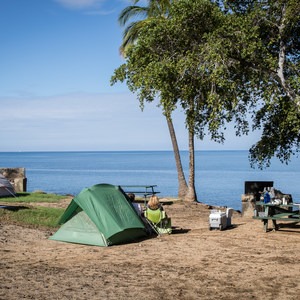You are here
Kīholo State Park Reserve is a 1-mile coastal reserve approximately 20 minutes north of Kona. The reserve offers much to see and do– Wainanalii Lagoon, Keanalele (the Queen’s bath), and the black sand beaches being perhaps the most popular destinations within the reserve. Kīholo Bay in its entirety can be viewed from Highway 19 at the scenic overlook just past mile marker 89. As you look down from the overlook, you’ll notice the exceptionally cyan-blue water, particularly in the north end of the bay, which is called Wainanalii Lagoon. Freshwater springs feed into this bay, and when the fresh water meets the salt, it creates an unbelievably blue cyan hue. The abundance of freshwater springs also marks the bay as a historically significant spot. Located on the dry side of the island, this location offered much needed water to the historic inhabitants of the area, and the naturally occurring anchialine ponds provided prolific fishponds to support a thriving community in Hawaii’s pre-contact history. In fact, Wainanalii Lagoon is the remnants of a massive construction project by King Kamehameha I, though it is understood to have been first created at least 100 years prior. The king is credited with building a sea wall 2 miles in circumference to protect the teeming fishponds, but the lava flows of 1801 eventually left Wainanalii Lagoon in its current state. Wainanalii Lagoon is accessible to the public and is packed with honu (turtles), though the neighboring fishponds are on private property and should not be explored. While you might think the lagoon’s amazing blue water would make for superb snorkeling, stick to the open ocean for the excellent snorkeling. Because the water within the lagoon is brackish (fresh and salt mixing), the different waters mixing within the lagoon create a halocline effect that makes the water have a blurry appearance. Just before Wainanalii Lagoon, you can also find some papamu petroglyphs (the Hawaiian version of the game checkers) off a few yards from the initial cove.
There are two different ways to access the Wainanalii Lagoon northern portion of the reserve; you can park along Highway 19 and hike in through the lava field on a wide trail, or you can park at the end of the reserve's gravel access road at mile 89 (immediately before the scenic overlook) and hike along the shoreline. Both hikes are a little shorter than a mile. If you have a boat, kayaking in from the black sand beach at the end of the access road is another great option. If you choose to hike along the coast, you will pass a few mansions along the way (Paul Mitchell’s–yes, the hair product entrepreneur–being one of them) that are private property, but the coast itself is public access and typically littered with turtles. Keep in mind you should give turtles at least a 10-foot distance. Just past the mansions and before Wainanalii Lagoon you’ll notice some large fishponds. These are located on private property and should not be entered; they are currently being restored by The Nature Conservancy and Hui Aloha Kiholo thanks to a generous donation from the Mitchell family. If you would like to check out these fishponds more closely, assist in their restoration, and learn about their historical significance, check out The Nature Conservancy’s website for volunteer days, which are family friendly and held once a month.
One of the perks of hiking to Wainanalii Lagoon along the coast from the public access parking lot is that about 100 yards into your beach hike you will hit Keanalele (the Queen’s bath), which is another spot worth visiting in the reserve. The brackish lava tube is filled from a freshwater spring mixing with salt water from rising tides. There is some debate about whether it is appropriate to swim in the cave, but it is, in fact, legal to do so. Land caves in the area, however, are not legal to enter, and you will receive a hefty fine and court appearance if you are caught entering any of Kīholo’s land caves. If you do decide to go for a swim in Keanalele, be mindful that sunscreen is harmful to the delicate ecosystem and the water is a frigid 70 degrees. You might want to bring a headlamp if you plan to explore deeper into the back of the cave. While the cave does not go back much further than 25 yards, that is enough to leave you in complete darkness. With a headlamp, you’ll also be able to see the glowing eyes of the prawns that live within the cave, which can be a cool (and a little creepy) sight.
To the left of the gravel entrance road is a Kīholo State Park Reserve Campground and a black sand beach; permits for camping are available Friday through Monday and can be obtained one month in advance. They are a hot commodity on the island, so plan to book your permits immediately upon availability. Along the black sand beach on the southern portion of the park you will find excellent snorkeling, and often pods of dolphins can be seen “resting” in this area in the early morning. From November through February you can expect to see whales breaching throughout the day. The entry into the water at the beach is more like black pebbles than sand (and can hurt sensitive feet), but you don’t have to worry about a hidden reef amidst the pebbles. This portion of the bay is usually calm for swimming and rarely crowded, and this black sand beach is a popular spot for kitesurfing, too.
Logistics + Planning
Current Weather: Powered by Dark Sky



































Comments
Sign In and share them.